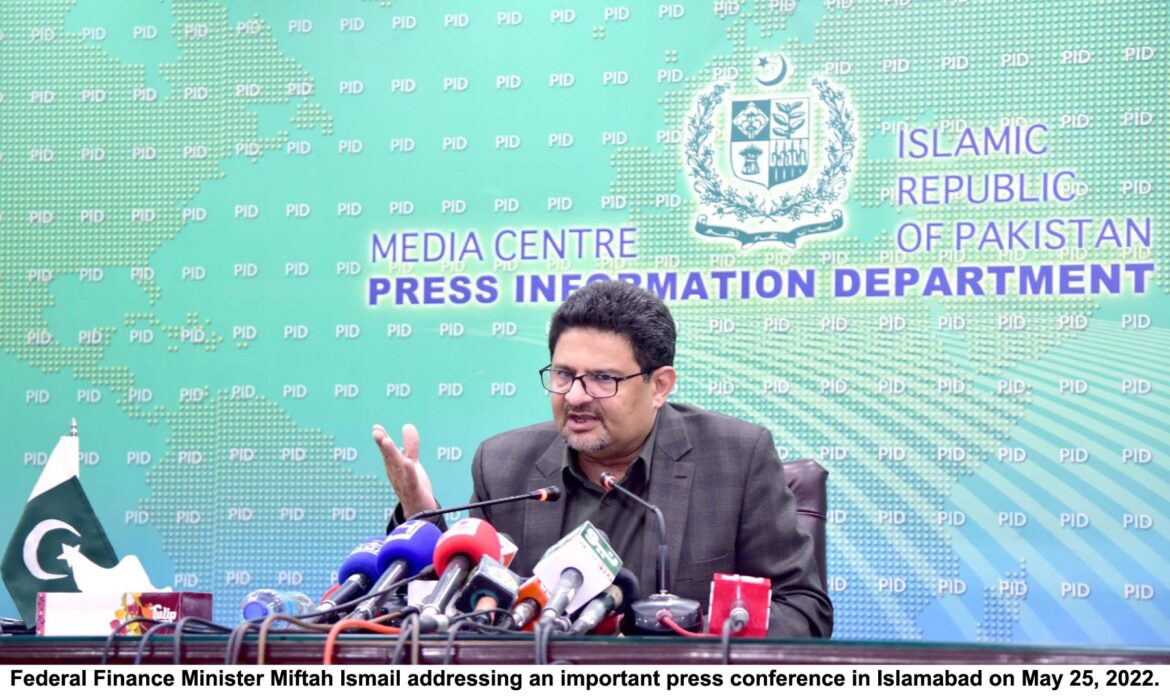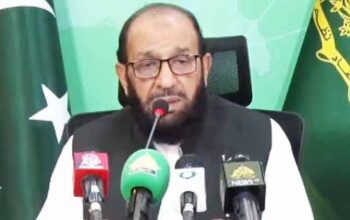By Staff Reporter
ISLAMABAD: Mustering the much-needed courage, the government on Friday levied a super tax on big-earners to raise extra Rs466 billion, enabling itself to chase a higher tax target of Rs7.470 trillion to reclaim the IMF loan ditched by the last government.
The government slapped a 10 percent one-time levy on 13 high-earning sectors with a revenue impact of Rs80 billion for the next financial year 2022-23.
The exchange rate depreciation will also help the FBR to collect more taxes at the import stage in the fiscal year 2022-23.
It revised tax rates for the salaried class in order to raise a net additional amount of Rs35 billion.
On Personal Income Tax (PIT), the government raised a tax amount of Rs80 billion by first abolishing the tax relief of Rs47 billion and then raising a tax amount of Rs35 billion so the FBR was going to collect Rs235 billion from salaried class in the next budget against a collection of Rs200 billion in the outgoing fiscal year. The PTI-led government had committed to the IMF to raise the tax amount of Rs335 billion through an increase in the rate of salary slabs for the salaried class but the PDM-led coalition government convinced the IMF to collect Rs100 billion less than agreed by the previous PTI-led government.
For the salaried class, the government proposed a tax rate of 2.5 percent for income brackets of Rs50,000 to Rs100,000. For income from Rs100,000 to Rs300,000/month, the proposed tax rate is 12.5 percent.
Where the taxable income exceeds Rs3,600,000 but remains under Rs6,000,000, the FBR has proposed to increase the tax rate from 17.5 to 20 percent. Where the taxable income crosses Rs6,000,000 but does not top Rs12,000,000, the tax rate has been proposed to be increased from 22.5 percent to 25 percent.
Those earning a taxable income over Rs12,000,000, will have to pay FBR a tax amount of Rs2,004,000 plus 32.5 percent of the amount exceeding the above figure on a per annum basis. For the income exceeding the above, the FBR has suggested a tax rate of 35 percent.
According to finance ministry officials, all the IMF demands on the fiscal front have almost been fulfilled and the Fund staff is set to share a draft of the Memorandum of Financial and Economic Policies (MEFP) on Monday next week.
The IMF and Ministry of Finance as well as the State Bank of Pakistan are holding parleys continuously.
Meanwhile, Minister for Finance Miftah Ismail also chaired a focusing on the government’s strategy for hiking power tariffs.
The IMF has objected to the government’s estimates of allocating Rs225 billion for Price Differential Claims (PDCs) for the next budget as the IMF assessed that it might escalate to over Rs350 to Rs450 billion. The fuel price adjustment for May 2022 has been estimated at Rs8/unit while it may go up further for June 2022. The increased prices of RLNG in the international market have increased the woes of the cash-bleeding power sector as the price of furnace oil and coal also went up thus increasing generation cost manifold.
The Poverty Alleviation Tax, a one-time tax, which was levied at the rate of 2 percent of the income of over Rs300 million through the Finance Bill on June 10, 2022, has been proposed to be slashed to one percent tax on the income between Rs150 million to Rs199.99 million, two percent tax on the income between Rs200 million to Rs249.99 million, three percent tax on the income between Rs250 million to Rs299.99 million and four percent tax on the income of Rs300 million and above.
Earlier, the government estimated to generate Rs37 billion with these taxation measures, but now it has jacked up its estimates up to Rs120 billion. The net addition will be Rs80 billion only.
The government slapped a 10 percent super tax on 13 big industries including cement, sugar, steel, oil and gas, RLN Terminal, textiles, banking, auto industry, tobacco, fertiliser, aviation, chemical, and beverages.
The government also proposed a tax on jewellery shops at Rs40,000/shop. There are nearly 30,000 jewellery shops and only a few are registered. The withholding tax on the sale of gold sales by consumers has been cut down to one percent from 4.
Copyright © 2021 Independent Pakistan | All rights reserved




